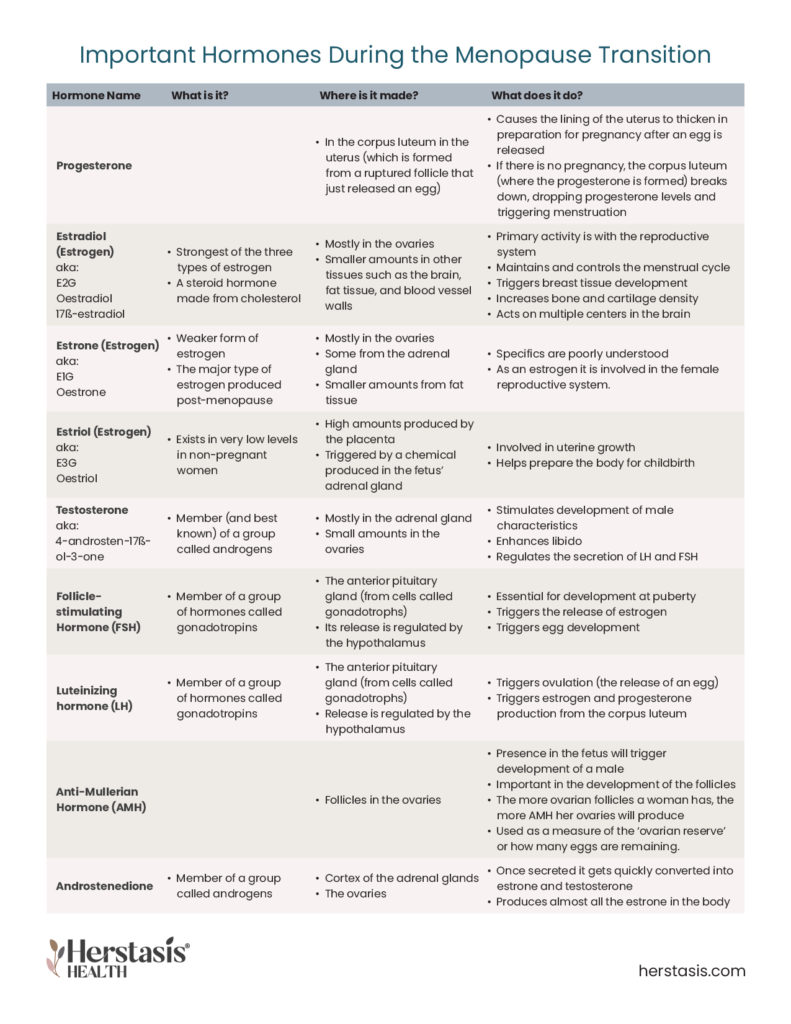What are Hormones?
Hormones start working when a fertilized egg (you!) implants in your mother’s uterine wall and their activity won’t stop until the day you die.
So what are hormones and why do they exert such a powerful influence on our minds and bodies?
Hormones are chemical messengers that are made in one place in our body and released into the bloodstream to carry messages to other parts of the body. That might not sound like a big deal until you realize that hormone messages carry the instructions to do almost everything going on in your body including:
-
◇ breathing
◇ changing food into energy (metabolism)
◇ reproduction
◇ movement
◇ physical development
◇ growth
◇ emotions
◇ regulating blood sugar
The major sex hormones (estrogen in women and testosterone in men) drive physical and physiological development. However, women also have low levels of testosterone and males have low levels of estrogen. Read more about testosterone in women here.
How Hormones Work
At its most basic, the endocrine system works like this:
Gland ➜ hormone ➜ bloodstream➜ receiving/target cell ➜ action
In other words, a gland produces a hormone that travels via the bloodstream to its target cell where the message is delivered and the cell then follows the hormone’s instructions to do something.
Many hormones work in a more complex fashion, called feedback loops, as shown in the Figure below.
A positive feedback loop happens when one hormone sends a signal to increase secretion of another hormone. A negative feedback loop happens when one hormone sends a signal to decrease the secretion of another hormone.
In the case of the menstrual cycle, there are three (3) feedback loops at play. The menstrual cycle is controlled by the hypothalamus, which regulates the anterior pituitary, the ovaries, and the endometrium (lining of the uterus). The hypothalamus releases gonadotropin-releasing hormone (GnRH) in pulses every few hours, and these pulses stimulate the anterior pituitary to release FSH and LH.
Estrogens
Estrogen, known as ‘the Master Regulator’ is involved in almost every process in your body, the endocrine, central nervous, skeletal, metabolic and cardiovascular systems. Estrogen plays a key role in female sexual health, controlling the development of secondary sex characteristics, menstruation, pregnancy, and menopause.
There are three different types of estrogen made by your body:

Estradiol
◇ Made by the ovaries
◇ The major form of estrogen during the reproductive years

Estriol
◇ Made by the placenta
◇ The major form of estrogen during pregnancy

Estrone
◇ Made by the adrenal glands and fatty tissue
◇ The major form of estrogen made after menopause
When the ovaries stop producing estradiol after perimenopause, estrone becomes the dominant type of estrogen in the body. It is produced in a number of different sites, including your bones, your fat, and in your brain. This estrogen is used ‘locally’ or near the site of its production. For example estrone made in the bones is used to protect loss of bone mineral density. Some of that estrone may ‘escape’ and enter into the circulation where it becomes available for use in other systems. [1]
Estrone is a weaker form of estrogen as it has a lot less ‘strength’ compared to the strength of estradiol from the ovaries. If estradiol binds to 100% of the estrogen receptors, estrone binds to one 3.5% – 4% of those receptors, giving a much weaker estrogen influence. [2]
[1] Simpson ER. Sources of estrogen and their importance. J Steroid Biochem Mol Biol. 2003 Sep;86(3-5):225-30. doi: 10.1016/s0960-0760(03)00360-1. PMID: 14623515.
[2] Aurélie Escande, Arnaud Pillon, Nadège Servant, Jean-Pierre Cravedi, Fernando Larrea, Peter Muhn, Jean-Claude Nicolas, Vincent Cavaillès, Patrick Balaguer. Evaluation of ligand selectivity using reporter cell lines stably expressing estrogen receptor alpha or beta. Biochemical Pharmacology, V71:10, 2006, pp. 1459-1469,
ISSN 0006-2952. https://doi.org/10.1016/j.bcp.2006.02.002.
Original content, last updated February 17, 2025.
© 2025 Herstasis® Health Foundation




